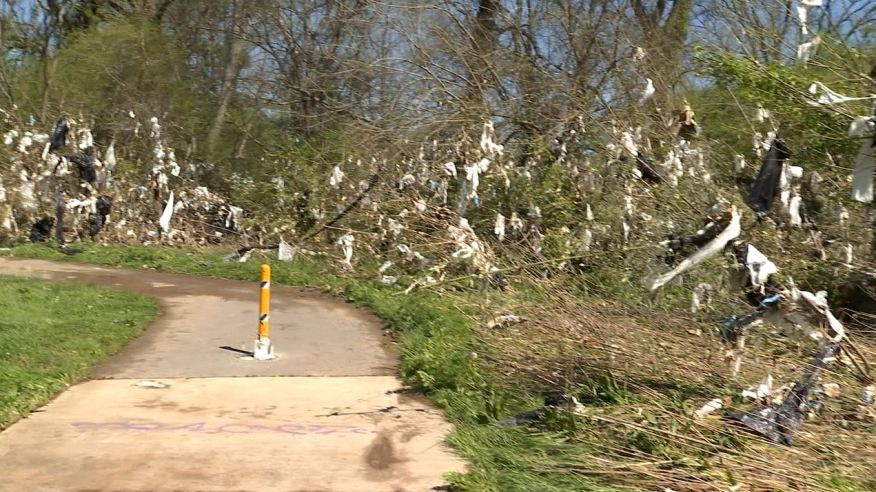- Kathy Hawes
Plastic & Water Don't Mix!
An Earth Day No-Brainer

After Nashville floodwaters receded again recently, we were left with a reminder of what lurks beneath the surface of our lakes and rivers.
Disposable plastic shopping bags have become water pollution’s poster child, so to speak, contributing to the plastic accumulation zones in the ocean. Of the five major zones, the most famous is the Great Pacific Garbage Patch (GPGP), which is 1.6 million square kilometers (twice the size of Texas) and located halfway between California and Hawaii. (Contrary to popular belief, the GPGP is not a floating island of trash, but rather an area with a highly dense concentration of debris.)
There is valid debate over bans of disposable plastic shopping bags because the alternatives are not all that great, either. Bans on the thin bags often result in drastic increases in the sale of thicker garbage bags. Paper and reusable plastic tote bags are not any better for the environment, and the Danish government reported that one would have to reuse an organic cotton bag 20,000 times before it is better for the environment than one disposable bag from Kroger or Walmart.
The debate over plastic bag bans will continue, as it should. At the very least, it keeps plastic pollution in the headlines and in the minds of us all. When the public realized that “microbeads” in many skin care and cosmetic products were passing right through wastewater treatment plants and into our waters and our bodies, industry responded to decreased demand largely by ceasing production of those products.
Microplastics drew national attention when the Tennessee River (watershed population: 5 million people) was revealed to have microplastic pollution over 80 times greater than the Rhine River (watershed population: 50 million people). This discovery prompted a slew of desperately needed research.
As any parent can attest, there is also much to be done in terms of regulating plastic packaging. One child toy’s packaging can have several times the plastic content of the toy itself, which is often quickly discarded.
Perhaps the most egregious of single-use plastic pollution is the disposable drink bottle. Beverage container deposit programs (so-called “bottle bills”) are uncommon in states and absent in Tennessee. The benefits are easy to tout, including incentives for recycling, decreased litter and water pollution, and steady revenue for environmental programs. But such programs need significant citizen participation and convenient, statewide return centers.
This year, state legislators introduced the Tennessee Cleaner Landscapes for the Economy, Agriculture, and Nature (CLEAN) Act, which did not leave House or Senate agriculture committees, but it is a good step in the right direction.
Humans will never get rid of their “stuff,” but they must find a way to manage it.